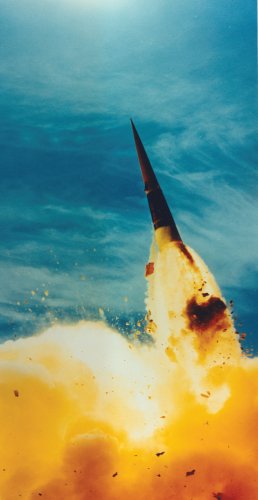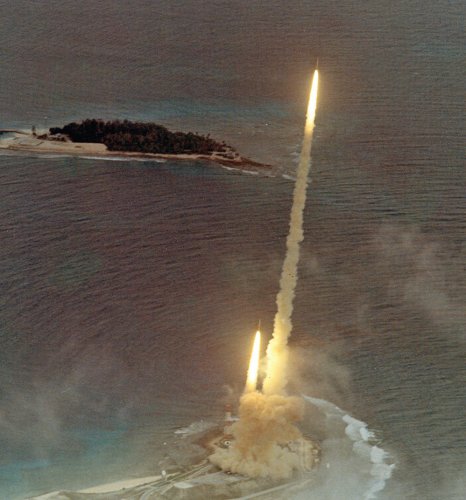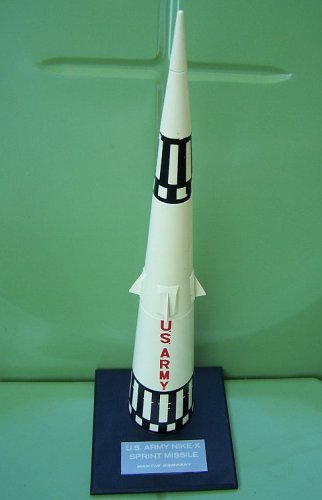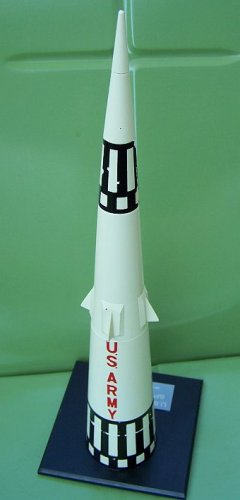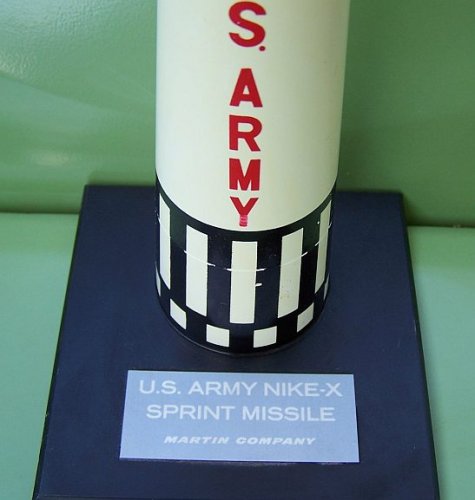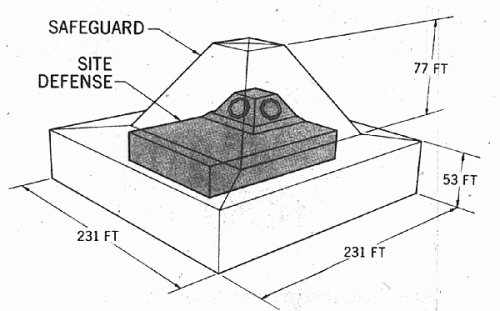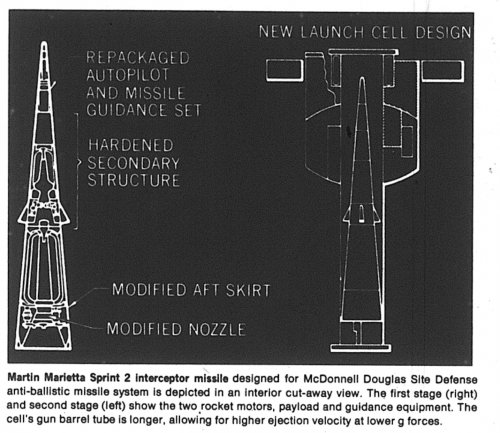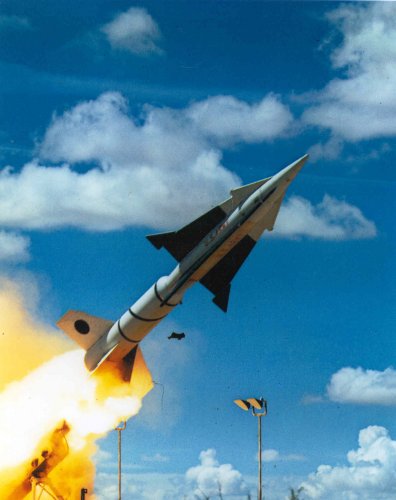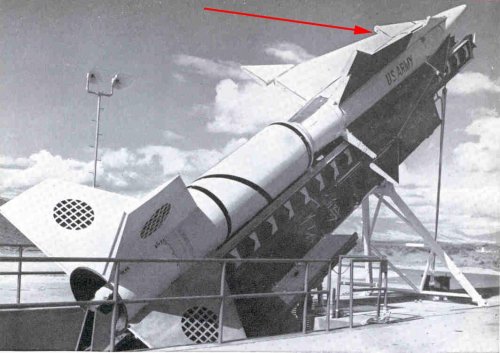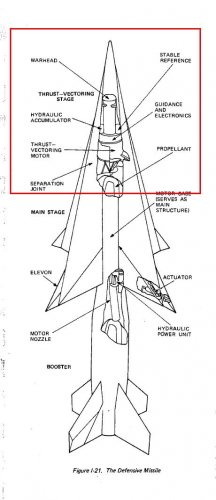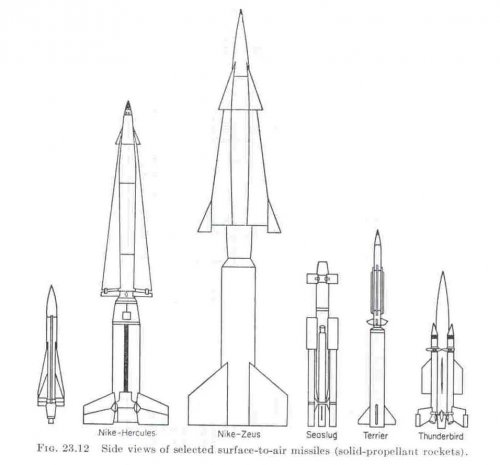Is it possible to get this thread title changed to "Spartan/Sprint ABM and Derivatives"?
------------
SAFEGUARD's computing environment was frozen around 1967; when no commercial computer on the market or planned at the time could meet the 20+ Million Instructions Per Second environmental goal; so SAFEGUARD's computer system was unique.
[BTW, to put all this in some perspective; the Motorola 68000 used in the Sega Genesis of the 1990s had 1 MIPS at 8 MHz...and was available in 1980 -- it took until the late 80s to drop below $<30 CPU to become available for game systems.]
By the time SPRINT II/Site Defense was being developed in 1974; the CDC 7700 (which is actually two CDC 7600s ganged together) was more than powerful enough, and would have been used in an early example of COTS, also using commercial programming languages, to allow commercial techniques to be used to maintain the ABM/BMD codebase, rather than the whole thing being a horrible mishmash of exotic military programming languages.
Also, the ground hardware was much smaller [see attached photo]
It had several advances over the earlier SAFEGUARD radars:
Aviation Week -- June 16, 1980:
* Operate from dormancy, implying stability from the moment of turn-on. This was achieved in the site defense radar largely through a combination of solid-state circuitry and digital techniques. This approach did not eliminate completely temperature-sensitive components from the radar, but the remaining such sevices are maintained at their operating temperatures throughout the dormant period to avoid shifts in operating points after turn-on.
* Perform bulk filtering -- separation of decoy and missile tank debris returns from reentry vehicle returns -- within the radar in order to reduce the load on the computer.
...
The dormancy issue is very important for the Army because of its cost implication, according to B. C. Ames of the field office here for the systems technology program. The Safeguard radar required a large supporting staff on a 24-hr. basis, and therefore was very expensive to operate and maintain. The site defense radar operates on command in an essentially unmanned mode, requiring only a small maintenance staff for support. The radar has a fault isolation capability that further enhances the operation and maintenance cost picture.
By having much smaller radars spread around; Site Defense got around the claims that SAFEGUARD's radars could be blinded by nuclear detonations (not true) or easily destroyed; by having lots of cheaper smaller dispersed radars which could "look around" NUDETS and present a larger target array than a few really big radars.
It would also have been designed for RAPID BREAKOUT DEPLOYMENT:
Aviation Week & Space Technology. April 29, 1974
Site Defense installation would be much simpler than Safeguard, according to Army officials. The system would be constructed on pallets so that the various components could be assembled, tested and kept in the warehouse until they were moved to Kwajalein for system testing. This method would permit buildup and rapid deployment in the event of abrogation of the ABM treaty.
The palletized components would be trucked to the reinforced concrete Site Defense building, called a defense unit, and installed through openings prior to completion of the exterior wall. Compartments in the wall would house weapon system and facility equipment pallets. The wall would be about 20 ft. high and below ground.
Sprint II itself was a whole bunch of win:
Aviation Week & Space Technology. April 29, 1974
Improvements for Sprint 2 include:
■ Greater accuracy.
■ Maneuvering capability more than three times greater than Sprint's.
■ Increased reliability and reduction in maintenance costs.
■ Hardening to withstand nuclear blast and debris. Both the missile and its launch cell would be hardened against blast and radiation.
■ Ability to withstand blast forces as well as maneuver forces.
■ Integration of the missile guidance set and autopilot into circuit guidance set to increase accuracy and reduce costs.
In the Sprint 2 launch cell, the first-stage aft skirt would be modified to have a single-tube launch configuration to reduce cost.
The glass fiber cover used on the Safeguard launch cell would be replaced with a hinged concrete door that could open in less than a second.
...
"Sprint is designed for the threat of the 1980s, against Soviet ICBMs like the SS-X-18 and SS-X-19 that the Soviets have been testing and appear bent on deploying before reaching a permanent agreement with us. It [Sprint 2] is stressed a great deal more than the Safeguard Sprint for more incoming targets, more nuclear fireballs and a more dense battle in an area greatly perturbed," a Pentagon official said.
Sprint 2 would have a longer shelf life and require fewer operational- checks once the missile had been placed in its launcher, the official added. He said that components of Sprint 2 are being produced now at a rate of about three missiles a month. The Sprint 2 is scheduled for some pop-up tests at Martin Marietta's facility in Orlando, Fla., in 1975 before the Site Defense tests at Kwajalein in 1976.
SPRINT II was only just the beginning....
Aviation Week & Space Technology. May 6, 1974
The advanced technology interceptor program scheduled to begin within the next year is expected to lead to a design that would increase the speed of the hypersonic Sprint 2 missile now in development by a factor of 1.5-2. Development must be completed in two major areas that offer thorny problems prior to design of a new interceptor missile. They are to develop and control burning rates of pro-pellants that will provide the required velocity and to solve structural problems in that speed regime.
Both areas are now beyond the state of the art, Army officials said. But work is under way with carbon fibers to develop structural designs that could be employed in the new interceptor's airframe, according to a Pentagon official. He said the jet interaction and external burning control techniques flight tested during the Army's UPSTAGE program are applicable to a new-technology interceptor but require some refinement before engineering development could begin.
UPSTAGE itself used zirconium staples in the propellant to increase burning rates; but it only achieved 15% more burn rate; not enough for an Advanced Technology Interceptor.
Additionally, the UPSTAGE flight tests had pre-programmed manouvers designed to intercept a theoretical evasively manouvering MARV in such a way to put the most stress onto the UPSTAGE vehicle.
SPARTAN was not to be left out however of product improvement plans.
From March 1969 onwards, a product improved SPARTAN was always planned for Phase II of SAFEGUARD, under the following names:
Project 20 / Advanced Spartan / Improved Spartan / Spartan II
The plans were to have it co-deployed alongside 'Normal' SPARTAN at Safeguard Sites. As of 1971, plans were for Improved SPARTAN to IOC around 1976.
It would have been a faster reacting missile -- Basic SPARTAN took 30~ seconds to fire. Most likely ring laser gyros from SPRINT would have been spiraled into the guidance section.
The 4-5 Megaton warhead of Standard Spartan would have been replaced with a third stage which incorporated a smaller 1 megaton warhead, and provided 50% greater terminal burnout velocity than Standard Spartan.
This would have enabled greater defended range from SAFEGUARD sites, as well as making it capable of high velocity, low altitude intercepts of depressed trajectory SLBM shots, along with defeating advanced penaids and Fractional Orbital Bombardment Systems (FOBS) threats.
As mentioned earlier, both Standard "Old" Spartan and Improved Spartan would co-exist in SAFEGUARD sites, with Improved Spartan enabling longer range intercepts and defeating depressed trajectory shots; reducing the need for SPRINT to be widely deployed to defeat them. Standard Spartan would still be used for cases where circumstances dictated the need to sanitize high volumes of space of incoming threats with it's much larger warhead.
[This was said as much during Congressional hearings, which I skimmed using ProQuest; I was unable to save them as I didn't have a USB fob at that university]
Aviation Week & Space Technology. September 18, 1967
[The US] Army is considering a liquid-propellant rocket motor to replace the current solid third-stage motor on the Spartan intercept missile of the Nike-X system. Army planners have presented Defense Dept. estimates of reliability expected and associated costs of various Nike-X deployment schemes, together with threats anticipated in the mid-1970s.
Aviation Week & Space Technology, October 2, 1967
High-performance upper stage for the Spartan 2, an advanced version of the Nike X-Spartan anti-ballistic missile, is under accelerated study by an Army/McDonnell Douglas team. Both liquid propellant and dual-level thrust solid-propellant stages are being considered (AW&ST Sept. 18, p.-23. The stage would generate total impulse of more than 1 million lb./sec, to accommodate a new warhead. Development and test cost for the new upper stage is expected to exceed $200 million.
Aviation Week & Space Technology. March 25, 1974
Improved Galosh, a follow-on Soviet anti-ballistic missile defense system with the capability of loitering aloft while sorting out U. S. intercontinental ballistic missile penetration aids from warheads, is under advanced development.
The Improved Galosh has the capability of stopping and restarting its motor at upper altitudes four or five times to provide the loiter capability.
The Improved Galosh has already been flight-tested by the Soviets. While the two-stage missile coasts with its motor off, ground radar stations and data processing units can track incoming reentry vehicles and compute the warhead's trajectory. The engine then can be restarted to maneuver the missile for an Intercept.
The delay enhances the Soviets' capability to determine which reentry vehicles are penetration aids and which actual nuclear warheads.
The actual warhead behaves differently over a long flight path than do penetration aids because of weight differences. By extending the flight time of Improved Galosh, and providing a restart capability for maneuvering, the Soviets provide more time to track and determine actual warheads for interception.
Improved Galosh is operated as a terminal reentry vehicle interceptor and has a slant range of 200 to 400 naut. mi. The original Galosh missile has been deployed to defend large area targets and not for defense of specific missile fields. Galosh is deployed around Moscow, with four sites having 64 launchers.
The U. S. so far has been limited to studies of a loiter-mode anti-ballistic missile Interceptor using an Improved Bell Laboratories/Western Electric Spartan XLIM-49A missile. This version of the Spartan would have a nuclear warhead in the 1-megaton class for loiter-mode operations instead of the present 5-megaton class warhead.
Soviets are expected shortly to begin adding 36 more Galosh launchers to the Moscow site. A second large radar will be added to a large target acquisition and tracking radar already in operation, with four sets of smaller engagement radars.
Miami News - February 28 1972; repeating a NYT Article "New Missile is Designed to Manouver"
The advanced system, coupled with a new satellite equipped with special Infra-red sensors, would also offer increased capability against small numbers of Soviet missiles carrying sophisticated defense penetration devices, according to senior Pentagon officials.
...
The Defense Department, he said, has successfully tested "infra-red sensors aboard spacecraft" that have detected the path of missiles and warheads "in mid-course flight."
Foster also noted the successful test-firing of an anti-missile missile that can fly out into space, stop its engine, then start again and maneuver to reach its target.
...
Heretofore, the principal factors limiting missile defense were the relative short ranges at which data could be received on the precise flight path of the incoming warheads, and on the limited range of interceptor missiles.
The longest-range American interceptor, the Spartan missile, now has a range of about 400 miles.
But sources say the advanced programs should enable American defenders to accurately predict the flight path of an enemy missile shortly after it has been launched some 5,000 to 7,000 miles from the United States.
Work on a much improved Spartan, the sources add, would permit interception to take place roughly 2,000 miles from the United States.
...
"If we should decide it's still desirable to have a China-oriented defense," one Pentagon source said, "the ability to be able to predict the exact flight path of an incoming missile several thousand miles away, and to be able to effect Intercept at least 2,000 miles from our launch site, should permit country-wide defense from almost anywhere in the United States."
By going out 2,000 miles or so and then coasting, the improved Spartan could employ special sensors to sort out the actual warhead from the decoys; it would then restart its engines and go after the real thing.
The Soviet Union, intelligence sources say, has been testing at least two versions of an advanced anti-missile missile with a similar stop-start feature. It is assumed a missile of this type will be deployed at sites around Moscow where the Russians last year resumed construction activity after a lapse of several years.
Aviation Week & Space Technology. May 6, 1974
The Army's Homing Intercept Technology (HIT) is now in its third stage and will be ground-tested in a chamber under contract with LTV Aerospace Corp. to determine if the small, lightweight (a few pounds) warhead can home on simulated targets and deploy its kill mechanism for point detonation.
Prior to the signing of the anti-ballistic missile treaty and interim offensive ICBM weapons agreement in May, 1972, the Army was developing the Homing Intercept Technology program for use as multiple independently-targetable interceptors.
The ABM treaty prohibits multiple interceptors in a single booster, even if the work is merely a feasibility study of the concept, according to a Pentagon official. The Army reviewed the program in light of the provisions of the ABM treaty prohibiting development, test or deploy-ment of ABM interceptors for the delivery of multiple warheads.
The Homing Intercept Technology program developments now under contract are not prohibited by the treaty and are continuing, a Pentagon official said. He added that the final phase originally planned, launching cluster warheads, has been canceled.
Homing Intercept Technology is designed to provide an optically-guided, non-nuclear warhead. "Such a warhead, if successfully demonstrated in a ballistic missile defense environment; would permit the NORAD [North American Air Defense] commander, for example, to commit an interceptor without requiring the presidential nuclear release authority, which is inherent in current systems. In addition, a non-nuclear warhead eliminates the problems associated with nuclear explosions, such as radar blackout or distortion, interceptor fratricide [friendly interceptor killing another] and perturbed environment in general," an Army official said.
Homing Intercept Technology is adaptable to mass-production without requiring the use of nuclear materials and more economical "than a system providing equal effectiveness but using nuclear warheads. HIT, as-a non-nuclear warhead concept, offers the promise of very high lethality, without the need for complicated fuzes, auxiliary sensors, or sophisticated communication links," Army officials added.
Its propulsion system is a cluster of small rocket tubes wrapped around the optical sensor package containing a small digital computer and control mechanism. The rocket tubes also function as the kill mechanism for point contact with a reentry vehicle. The entire package is spin stabilized at a very high spin rate, according to Defense Dept. officials. The warhead's terminal homing device detects the target, and the computer maneuvers the device by firing the rockets to conduct the intercept. On signal, the rods are placed in the path of the incoming reentry vehicle, destroying it.
Under the original concept, or if the treaty is abrogated by either party, a large number of the small warheads would be used on an improved Spartan interceptor and they would provide a "cumulative probability" of detecting, tracking and destroying reentry vehicles, a Pentagon official said. Because the treaty prohibits multiple warheads on a single booster, "they could be developed for use on a
much smaller booster and HIT will likely be tested with a single warhead on a small booster," the official added.
Under the Homing Intercept Technology concept, the interceptor would be command-guided by ground-based radar until reaching a high altitude.
Under the multiple concept, which officials' stress is not being developed, a large optical sensor would be operated on the Spartan to detect targets at very long ranges. On command the smaller warheads would be deployed with their smaller optical sensors used for terminal homing. The large electro-optical system is designed to have the capability of discriminating reentry vehicles from chaff, penetration aids or decoys, officials said. They added that the technology could also be used in an anti-satellite mission.
...
A non-nuclear warhead could be one of several types, including a rod flechette or pellet configuration. "Not much warhead design effort is in progress now, but a fair amount of effort has gone into them in the past. It is a straightforward approach—with an RV traveling at about 24,000 fps. All we have to do is to put a-pattern like buckshot in front of that RV and it "provides the necessary velocity for destruction. The major warhead effort now is to establish homing devices that will insure a high probability of kill and deployment of the warhead at very small miss distances," a Pentagon official said.
"We are talking about warhead particles that weigh about 100 grains and depleted uranium is one example of a good substance to use. It makes a good kill mechanism. We can calculate the pattern and probability of a hit on an RV that presents a certain cross-section," he added.
Foreign Relations of the United States, 1969–1976, Volume XXXIV, National Security Policy, 1969–1972
Notes of Defense Program Review Committee Meeting
Washington, December 20, 1969
HAK: Why improve Spartan?
Foster: Old Spartan relied on large yield to attack large volume of objects. Subsequent to that, we saw we could get loiter capability. It can loiter 50–60 seconds. With last min. info, so you direct it, you don’t need as much yield, and you can get greater ranges. So you could have fewer sites.
HAK: I don’t understand. Original 12 sites gave you defense less easily spoofed, less subject to pen aids. What does it cost to get Improved Spartan?
Starbird: $450 million.
HAK: Why do we want it?
Foster: You can deal with advanced pen aids.
HAK: What you should do with advanced one is add more sites.
Starbird:
—The sites can reinforce each other, so fewer sites needed.
—If he uses depressed trajectory, big Spartan can’t catch depressed trajectory.
—Improved Spartan gives you loiter, 150 mile effectiveness against advanced pen aids. Don’t have to use Sprints.
HAK: We have major doctrinal problem. Chinese won’t have SLBMs. If rationale is China, aren’t you better off with old Spartan.
Starbird: No, with old, you get non-overlapping coverage. With Improved Spartan you have overlap. This is important as numbers build up.


